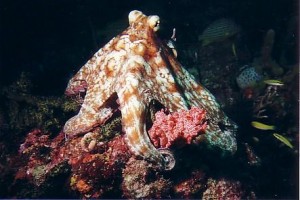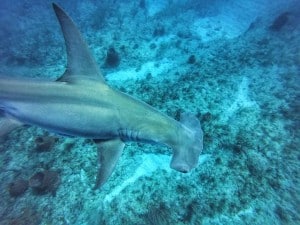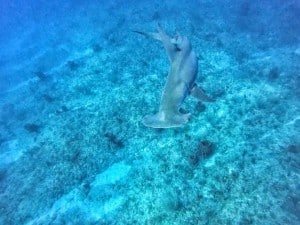Amazing reefs!
The following list describes just a few of the many dive sites within 30 min of the Boca inlet. Some reefs are just 5 minutes away! Our unique coastline offers some of the best diving in the country. So much sea life!! Big and small. Scattered among our coral reefs are a multitude of reefs varying in depths. So the beginner, as well as the experienced diver, can enjoy them. 90% of our reefs have a “western edge ” like a mini wall to dive. Drops of 15 to 35 ft along the edge. Our reefs are loaded with tropical fish, sharks, stingrays, turtles, and other sea life. Look at all of the different reefs to check out!
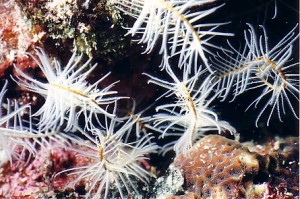
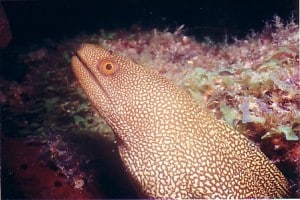
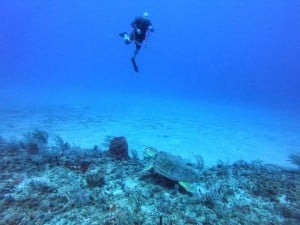
SEAGATE: The ledges along this spectacular reef start at 40′ to about 70′. With corals and coral heads, this reef is a photographer’s dream. You can drift this reef for about a mile. It takes several dives to explore the entire reef.
DELRAY LEDGES: The large canyons and cliff areas along this reef wander east-west as you travel the reef on a leisurely north-south current. The top of the reef is about 50′, with the bottom dropping off to about 70′. The backside in about 80′-90′ has dramatic finger cliffs and coral formations.
THE CHIMNEY: Named for the large hole in the top of the reef, 2 divers can swim thru the top of the reef and come out the west side. The hole is hard to see since it is always full of fish. This unique structure is different from any other reef and is home to many moray eels and schools of glass minnows.
FINKS GROUPER HOLE “SHARK DIVE”: Named for the abundant groupers and sharks who inhabit this reef, it is a must-see. Large squid have been known to wander this reef as well. The top of this reef sits in about 45′ with a spectacular west-facing ledge that drops into 70′.
SAN REMO: This reef is known for the many large lobsters we have caught there over the past several years. This reef has very high ledges as well. The quantity and vast colors of the various marine species make this another reef not to miss—lots of hammerhead sharks and reef sharks, and sandbar sharks. There is a resident goliath grouper that weighs around 400 pounds. This reef ranges from 50′ to 70′.
ENGLISH MUFFIN: Named for its spectacular nooks and crannies, invertebrates, soft corals, and shrimp abound. Great for macro photography. Depth ranges from 50′ to 72′ in the sand and 80-110` on the back or eastern side. Don’t forget to bring the butter and jam on this dive.
BRIGHTON LEDGE: This vertical cliff ledge soars from 70′ to 45′ on top. The reef runs for nearly a mile and a half along the north Boca coastline, making it an ideal site for our famous drift dives. With the frequent siting of turtles, this reef should be called turtle ledge. This reef is due east of a beach where there are hundreds of turtle nesting sites. Loggerheads and green, ridley, and hawksbill, and leatherback turtles nest here.
HONEYCOMBS: The many holes and ledges on top of this reef make this an excellent second site on our quest for an underwater adventure. Lobsters and colorful marine life are both plentiful. The top of this reef is very shallow, anywhere from 37 feet to about 50 ft.
BOCA TRENCH: This fantastic reef sits at 45′ with a ledge that drops down to 73′. The reef sweeps toward shore at the north end, and the current has cut out a huge cavern. Many interesting creatures are known to hang out here, including a large green moray. Sharp ledges and overhangs- turtles, lobster, and morays common. This reef has a resident goliath grouper as well—around 300 pounds.
MORAY BEND: This is another beautiful part of the third reef system. It has incredible sheer ledges with gorgonians and sea fans. The reef weaves east and west while running north-south. With a really nice and high western ledge. Has several different species of moray eels. Greens and sharptail and spotted and purple mouth and golden and chainlink moray eels.
CHALFONTE: Named after The first tall condo built in Boca, The fish seem to love this area as they swarm through nooks and crevices. An old old lobster still maintains a hideaway here where no one has been able to reach. Huge schools of reef fish as well! Has a great western drop-off to the sand.
BOCA ARTIFICIAL REEF LEDGE: Named for the artificial areojacks we put down in the late ’70s with FAU. It’s a natural reef with lots of critters using large overhangs and steep ledges for protection. Turtles are often found sleeping here at night—a great reef for photography.
CRAB COVE: This 60′ reef drops from 40′ to 72′ in stages and is a favorite for night dives. One night at the opening of lobster season, two nurse sharks were caught in the act of “playing doctor.” Great lobster reef. This reef is good with a slow current because of its length—beautiful drop-offs and coral.
SANCTUARY: This third reef has twin ledges with drop-offs facing both east and west. The valley in between is wide enough for nice drop-offs yet narrow enough to swim from one side to the other. Has one of the shallowest tops of our third reef system. One of the few reefs with a black durgeon population.
OPAL TOWERS: 28′ – 45′ reef with holes and caves (not big enough to fit in)- a great spot for lobster, topicals, barracuda, and corals. For the last few years, a 200 lb goliath grouper has been hanging around—two mounds of coral on the south end of this reef.
HILLSBOROUGH LEDGE: Depth 30` – 45`. This part of the second reef splits off into ridges running north and south. There are beautiful wide ledges and great hiding spots for lobsters and other critters. Every spring, a friendly manta ray cruises through for a while. this is the area that we see our whale sharks when they migrate thru between December and February. Our Diveboat Diversity FB page has a great video by Rich Collins of a whale shark seen here.
SEPARATED ROCKS A reef is a little different. It’s 17 different coral reef islands, which hook and curve as it runs north and west. They have separated by about a boat length apart and are about a quarter to a football field in size. It sits in 28` – 45 ft of water. An awesome lobster spot! Loads of tropical fish and sharks.
